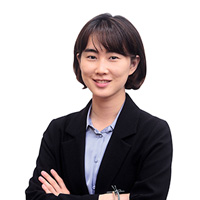[Temple to Table] Jangkalguksu, Korean spicy noodle soup
By Kim Hae-yeonPublished : Jan. 7, 2023 - 16:01

Nestled in the foothills of Bukhansan Mountain and run by Buddhist nuns, Jinkwansa Temple exudes a classical grace.
Dignified and elegant, the temple compound radiates a tranquil beauty. Its large jangdokdae (earthenware crock stand) is filled with orderly rows of crocks holding traditional Korean sauces.
To attain its current status, the temple had to overcome many challenges.
Although it was established during the Goryeo era, most of its buildings burned down during the Korean War. The temple lay in ruins for a while, but was gradually reestablished by two Buddhist nuns: Ven. Jinkwan who began to serve as its abbess in 1963 and Ven. Gyeho who became its abbess in 2006.
Establishing one Buddha hall after another on temple ruins, the two nuns rebuilt the temple compound and began reenacting the State Water and Land Ceremony, a ceremony that had previously been performed at Jinkwansa Temple under the supervision of the Joseon royal family.
The Water and Land Ceremony is a Buddhist ritual teaching Buddha dharma and feeding the lonely souls who wander in water or on land after death.
“Every year we offer the ceremony 7 times over a period of 49 days, and the last ceremony continues for two days. Different dishes are offered on the upper, middle, and lower altars, following the basic guidelines recorded in the Annals of Joseon. However, we prepare some dishes applying our own modern reinterpretation. The ceremony requires a great variety of food, so reenacting the Water and Land Ceremony also involves researching and restoring traditional temple food,” said Ven. Gyeho.
Jangkalguksu, spicy noodle soup
At temples, noodles are a popular dish and sometimes called “seungso,” meaning “it makes monastics laugh.”
Originally from Gangwon Province, Ven. Gyeho makes a special dough for her noodles by mixing boiled potatoes with flour. Adding no water at all to the dough, her noodles are known for their firm, chewy texture. To make the broth she uses Gangwon-style makjang -- an almost “instant” doenjang that requires only 10 or more days to ferment -- and adds fried Jinkwansa dubu as a garnish. Then her soup is ready to warm up one’s cold-weary body and mind. To make the broth you may also use clear broth instead of makjang, then serve with seasoning sauce.
[Ingredients]
- 3 potatoes
- flour
- salt
- veggie stock
- shiitake mushrooms
- dried shoots of Chinese cedar
- dried chili pepper
- soy sauce
- garnishes
- aehobak (Korean zucchini)
- carrot
Directions
1. Wash and peel potatoes. Boil them in a generous amount of water with a bit of salt until tender.
2. Remove potatoes and mash while hot, adding the flour little by little.
3. Prepare vegetable stock.
4. Shred carrot and aehobak, and stir fry slightly in oiled pan with a pinch of salt.
5. Slice pre-soaked shiitake mushrooms, and stir fry with a little sesame oil and soy sauce.
6. Put the dough on a pounding board and spread sheet-thin with a rolling pin. Fold the sheet, and slice into noodles.
7. Add makjang to the vegetable stock, and when it boils, add the noodles, aehobak, and mushrooms. Boil until all ingredients are cooked.
8. Put noodles in a bowl and add garnishes.
Provided by Cultural Corps of Korean Buddhism
-------------------------------------------------------------------
Temple food is food of the ascetics who express gratitude for all forms of life and wish for peace all around the world. The Cultural Corps of Korean Buddhism operates the Korean Temple Food Center where guests can learn and experience temple food. -- Ed.


















